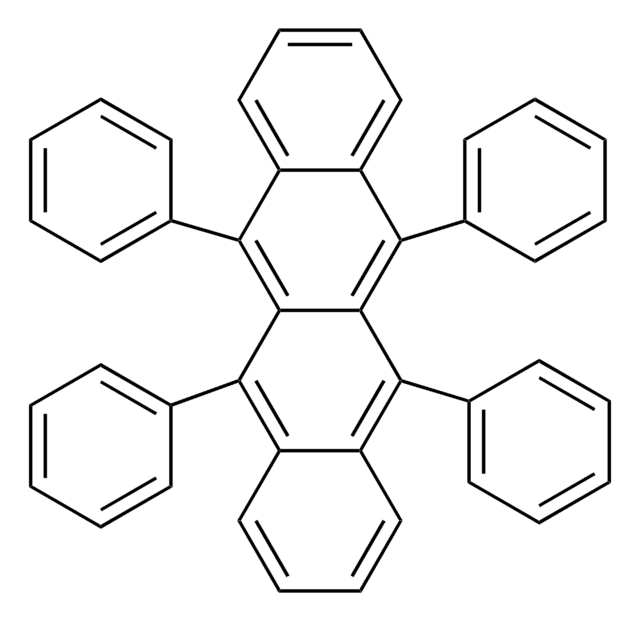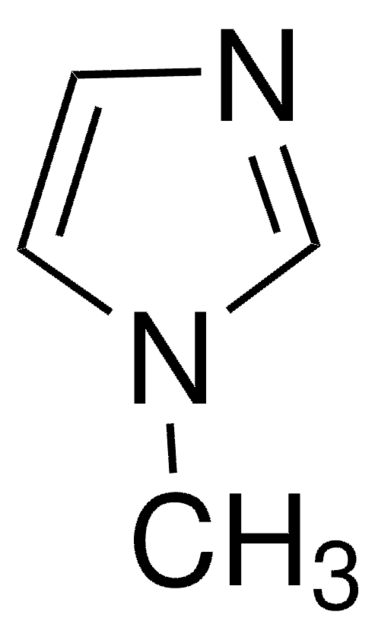716006
6,13-Bis(triisopropylsilylethynyl)pentacene
≥99% (HPLC)
Sinonimo/i:
TIPS pentacene
About This Item
Prodotti consigliati
Saggio
≥99% (HPLC)
Stato
solid
Punto di fusione
276 °C
Solubilità
acetone: soluble 0.16 wt. % at 23 °C(lit.)
anisole: soluble 2.03 wt. % at 23 °C(lit.)
n-butylbenzene: soluble 3.43 wt. % at 23 °C(lit.)
toluene: soluble 6.57 wt. % at 23 °C(lit.)
Densità
1.104 g/cm3 at 25 °C
Stringa SMILE
CC(C)[Si](C#Cc1c2cc3ccccc3cc2c(C#C[Si](C(C)C)(C(C)C)C(C)C)c4cc5ccccc5cc14)(C(C)C)C(C)C
InChI
1S/C44H54Si2/c1-29(2)45(30(3)4,31(5)6)23-21-39-41-25-35-17-13-15-19-37(35)27-43(41)40(22-24-46(32(7)8,33(9)10)34(11)12)44-28-38-20-16-14-18-36(38)26-42(39)44/h13-20,25-34H,1-12H3
FMZQNTNMBORAJM-UHFFFAOYSA-N
Descrizione generale
Applicazioni
Note legali
Avvertenze
Warning
Indicazioni di pericolo
Consigli di prudenza
Classi di pericolo
Eye Irrit. 2 - Skin Irrit. 2 - STOT SE 3
Organi bersaglio
Respiratory system
Codice della classe di stoccaggio
11 - Combustible Solids
Classe di pericolosità dell'acqua (WGK)
WGK 3
Punto d’infiammabilità (°F)
Not applicable
Punto d’infiammabilità (°C)
Not applicable
Scegli una delle versioni più recenti:
Possiedi già questo prodotto?
I documenti relativi ai prodotti acquistati recentemente sono disponibili nell’Archivio dei documenti.
Articoli
The conductivity of organic semiconductors can be increased, and the barriers to charge-carrier injection from other materials can be reduced, by the use of highly reducing or oxidizing species to n- or p-dope, respectively, the semiconductor.
Silylethyne-Substituted Pentacenes
Optoelectronic Devices Based on Diketopyrrolopyrrole (DPP)-containing Conjugated Small Molecules
Contenuto correlato
Organic electronics utilizes organic conductors and semiconductors for applications in organic photovoltaics, organic light-emitting diodes, and organic field-effect transistors.
Il team dei nostri ricercatori vanta grande esperienza in tutte le aree della ricerca quali Life Science, scienza dei materiali, sintesi chimica, cromatografia, discipline analitiche, ecc..
Contatta l'Assistenza Tecnica.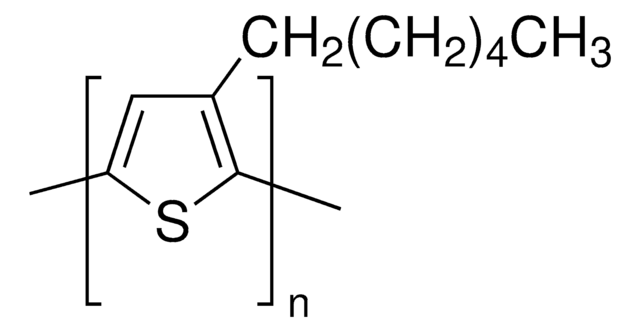
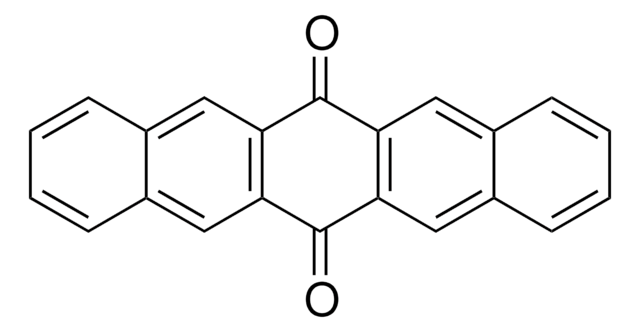
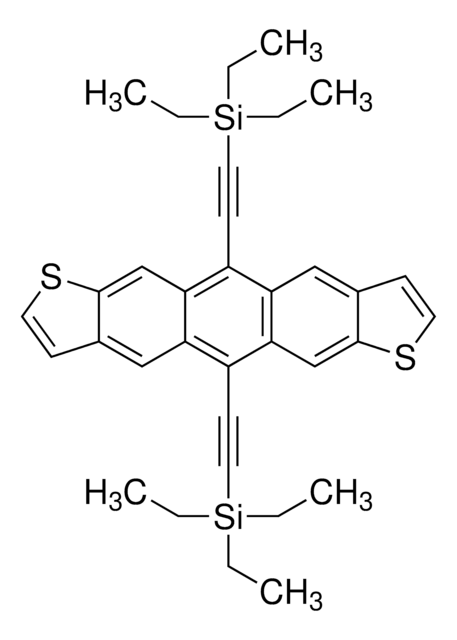

![Benz[b]anthracene 98%](/deepweb/assets/sigmaaldrich/product/structures/197/885/3a015625-5e09-4f15-8b17-4cc285304fc7/640/3a015625-5e09-4f15-8b17-4cc285304fc7.png)
